| T O P I C R E V I E W |
| maryjane |
Posted - Mar 13 2019 : 01:08:19 AM
I thought I'd share my set-up for cooling thermized milk per the discussion in my book (milk brought to 150 degrees for 15 seconds).
To participate in the State of Idaho's Raw Milk Program, milk must be brought down to 40 degrees within two hours. From there it goes into your fridge that should be kept at 36 degrees (don't rely on what the fridge tells you the temp is, buy a shelf thermometer).
I have three Milky Way pasteurizers for when I'm milking three cows. I don't use them as pasteurizers--that's a 30 minute process. I merely run my milk through a mesh screen into the inner bucket surrounded by water that gets heated. It takes about 20 minutes for them to get up to 150 degrees. I used a hand-held thermometer to check the temp. I'm vigilant so the milk doesn't go above 150 degrees (most of the probiotics are still alive but any nasties that may be on board have been killed--the survival of probiotic bacteria was verified by tests performed at the University of Idaho). In addition, the milk lasts longer and works better for cheese and yogurt making.
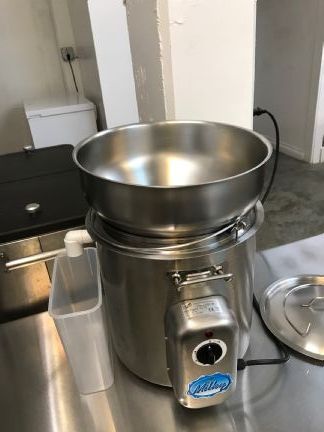
After it's reached 150 degrees, I pour the hot milk into 1/2 gallon glass canning bottles using a funnel.
Next, I put the bottles into a cooler on wheels that has room temp water in it (I refresh it once/week, keeping about a tablespoon of bleach in it). I have three coolers--each cooler will hold six bottles (3 gallons).
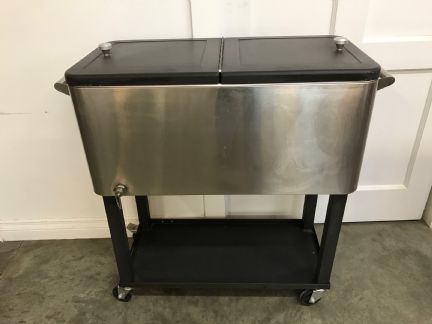
Then I get into my freezer (I have two of those) and pack frozen bottles of water around the bottles in the cooler. I do this until the water that was in the cooler rises to the shoulder of the bottles. You can't put the hot bottles directly into ice water or they'll break.
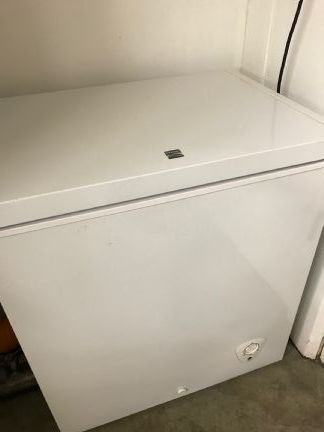
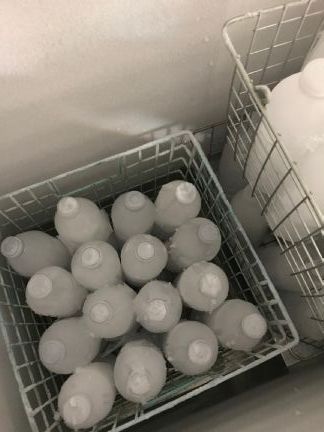
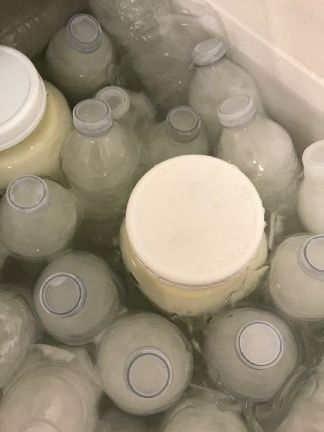
I leave the bottles in there for 2 hours at which time the temp of the milk has reached 38 degrees. You don't want to leave them longer because you want to get those bottles of ice back into the freezer so they'll be solidly frozen for the next day's milk.
Rather than put the frozen water bottles directly into the freezer with so much residual water dripping off them, I put them into wire baskets that I sit on the counter inside a plastic catch basin before putting the wire baskets back into the freezer. Every month I defrost the freezers.
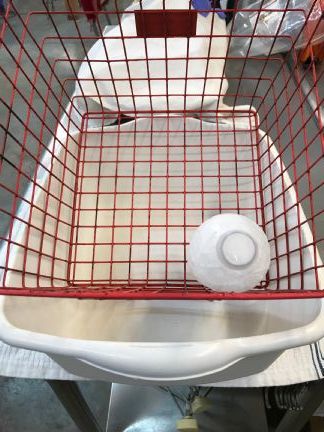
For cleaning my funnels and stainless steel vessels, I grab a new sponge every day. After I've used it, I set it to dry and take it to my milking parlor to use for cleaning.
Everyone who processes the milk (my son does it on weekdays) wears gloves and a hair net.
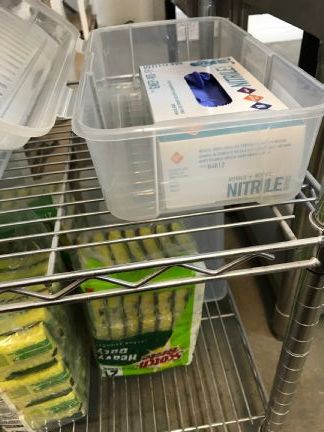

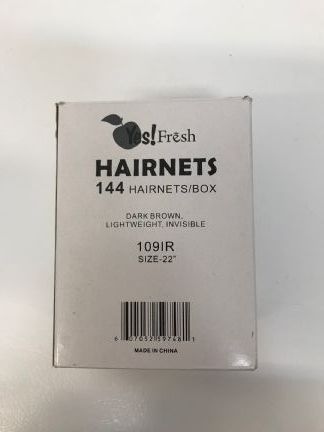
Just before I put the 1/2 gallon bottles of milk into the fridge, I use a towel to dry the lids and put a water-soluble label on each one with a date. The labels I use are larger than I need so I cut each one into fourths (Cambro.com).
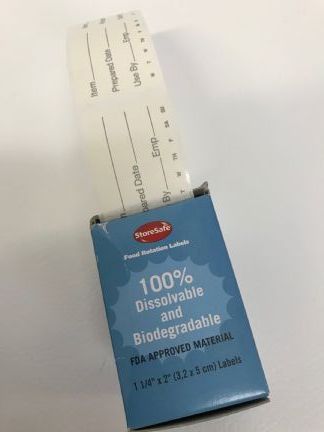
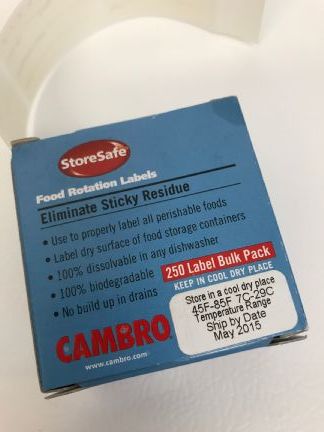
|
| 2 L A T E S T R E P L I E S (Newest First) |
| maryjane |
Posted - Mar 13 2019 : 07:05:21 AM
Keeping your milk closer to 32 is even better (one of my fridges pulls that off because I don't get into it as much). For sure, let us know what you come up with. Your cold stream sounds idyllic. And I thought we had a lot of snow.
I have one of Buck's solar set-ups and never use it because we have a generator should our power go out. I've been thinking about selling it. You'd need to buy the batteries. I'll give you a good deal:) |
| hugho |
Posted - Mar 13 2019 : 05:56:35 AM
excellent pics and description MJ. I always get ideas from your posts. My local dairy in Rigby Idaho is Daloris Dairy(only Jerseys) and they do not thermize their milk. It goes straight to their bulk cooler. It is hands down the finest milk our family has ever drunk. It has good keeping qualities as well. Commercial milk even the so called organic varieties is swill. I am given large quantities from a local food recycling outfit in Jackson and often it is fresh and not past the sell date. It goes straight to our pigs and sometimes the garden and the alfalfa field. Daloris Dairy submits the required reports to the the state which I have examined. Most of their milk goes to a bulk business in Blackfoot ID but they have a retail store at the farm which is sold locaLLY I am torn between thermizing our milk and going straight to a cooler. Getting it from 150 to 40 in under 2 hours sounds like a challenge. Getting it from 98.6 to 40 sounds easier! I will do tests using my milk cooling idea and keep you and the forum informed. We have a very cold trout stream creek carrying snowmelt running by our barn which is below 40 deg early in the season which I could also use. We also have 5 feet of snow which might be usable! Not sure how to proceed but I would like to reduce the labor and energy cost as much as possible and freezing bottles is something I would like to avoid but I will do it if necessary. You have sold me on the eazy ultimate milking system sold by Buck who seems a real sweetheart and is very fond of you. I think I will buy the system powered by 18V Makita batteries which is popular with his Amish customers. I have 2 Amish built cookstoves and I am getting more Amish by the day!I will check out your videos. Is there any downside to keeping the milk near 32 instead of 36? |
|
|
![[flourish]](/images/flourish-txt_mobius.png)
![[flourish]](/images/flourish-txt_mobius.png)